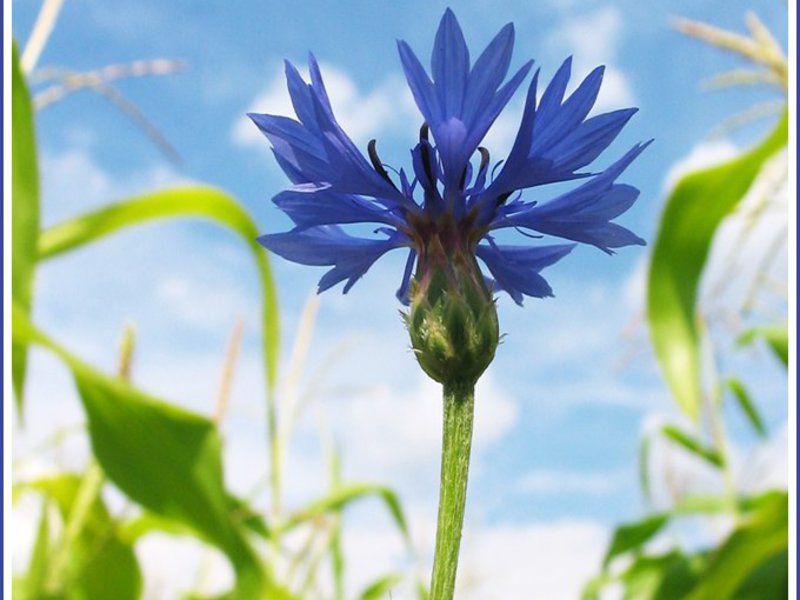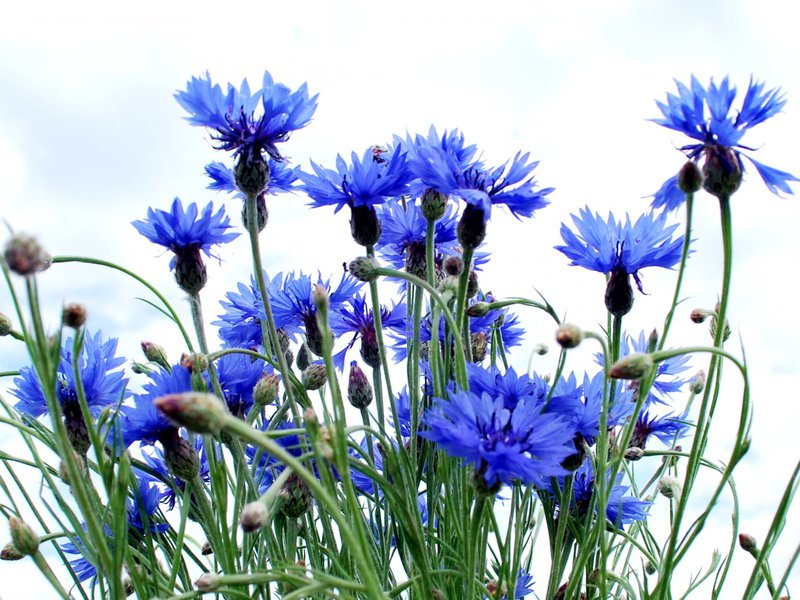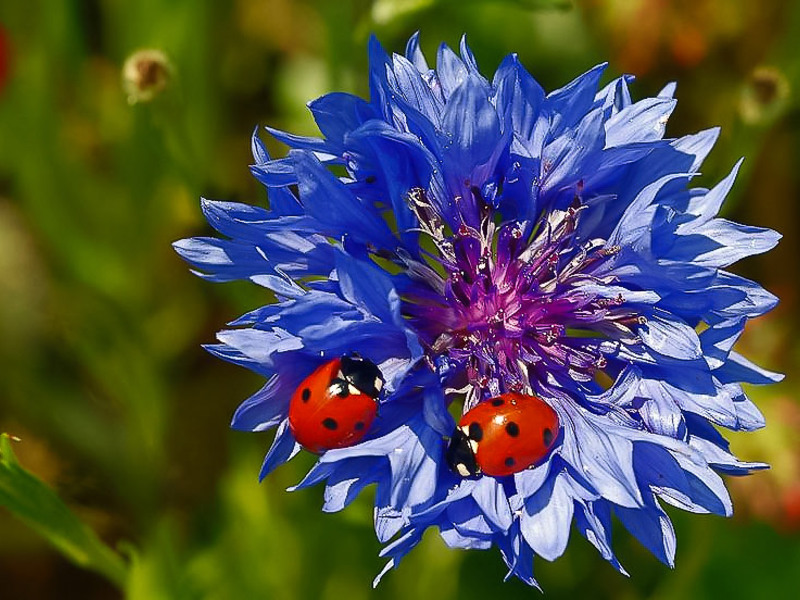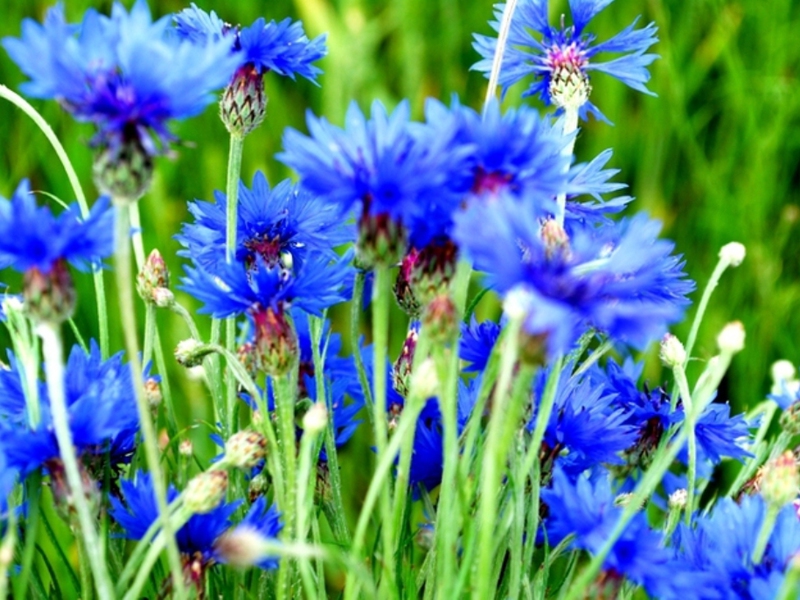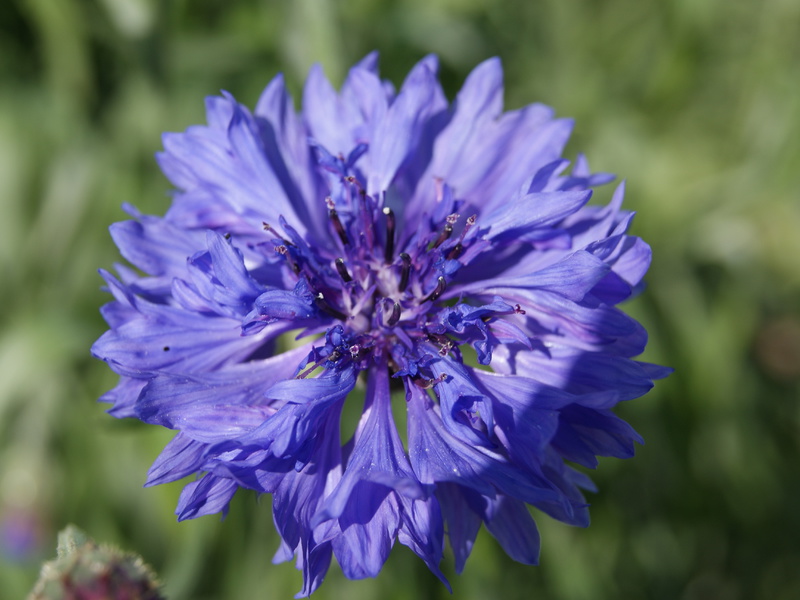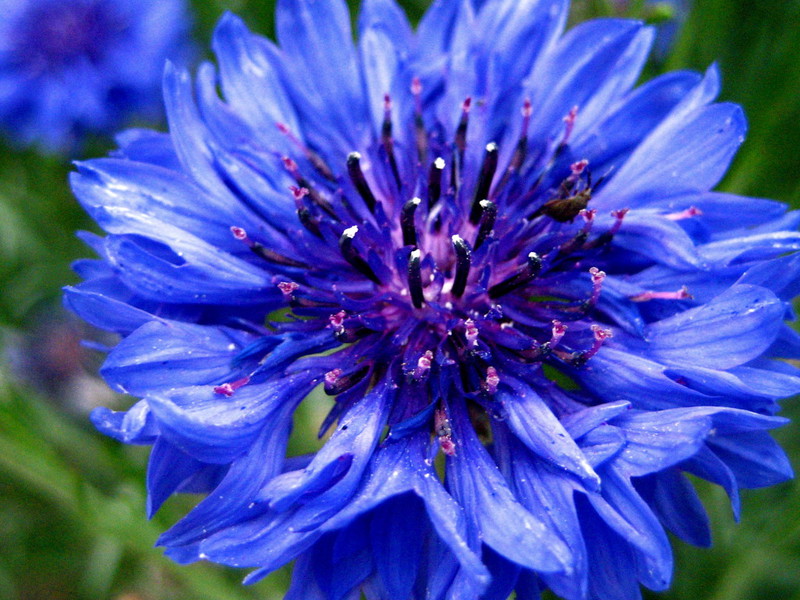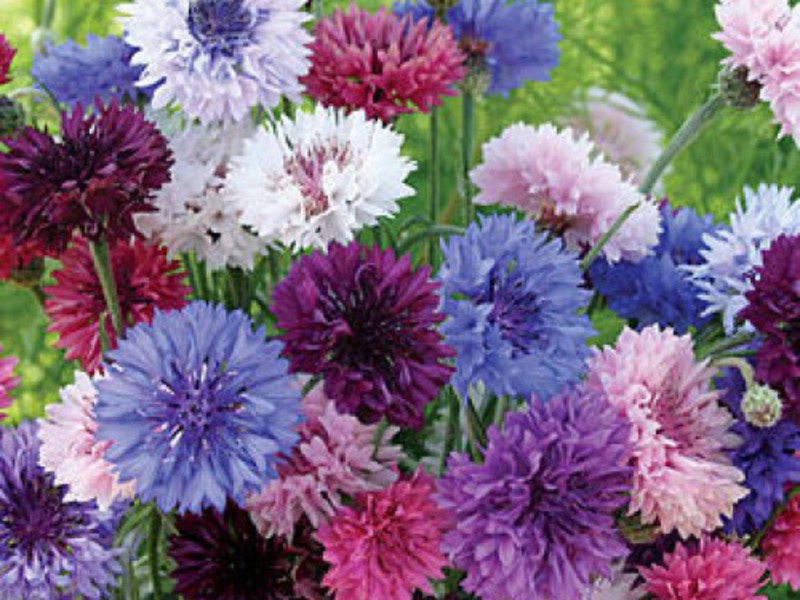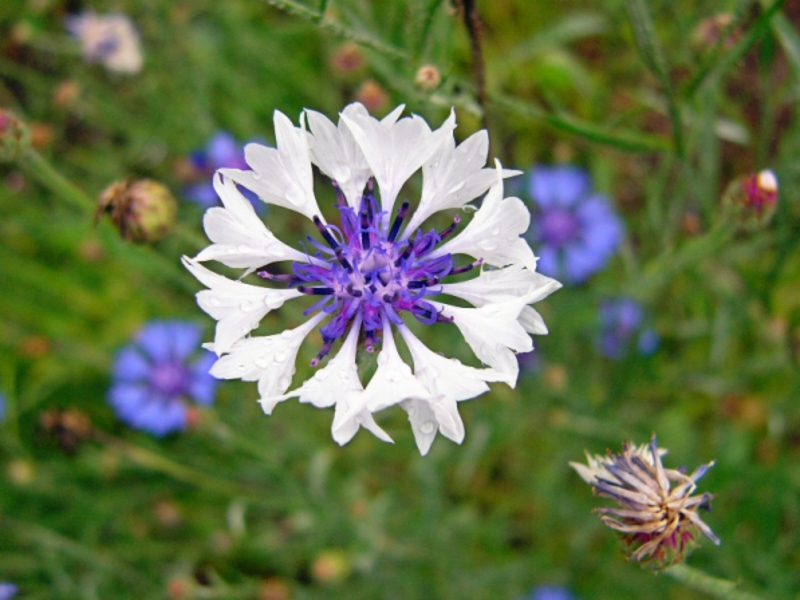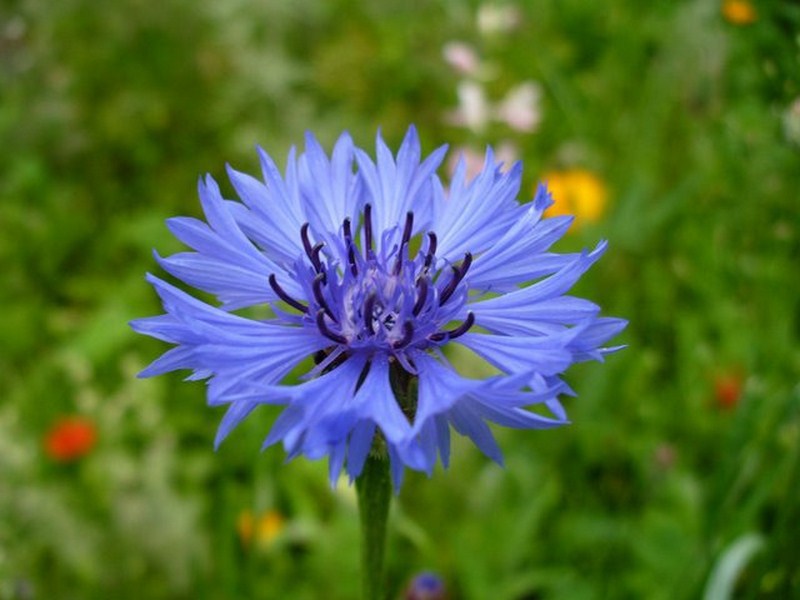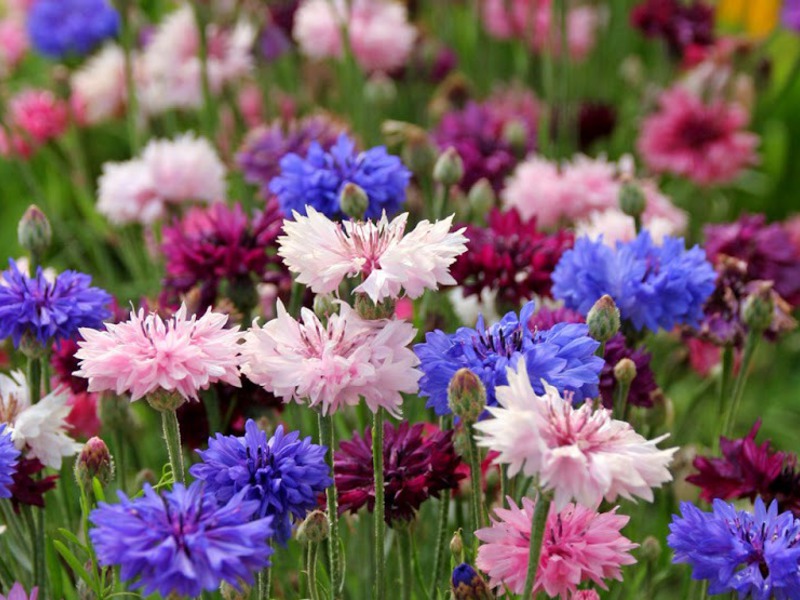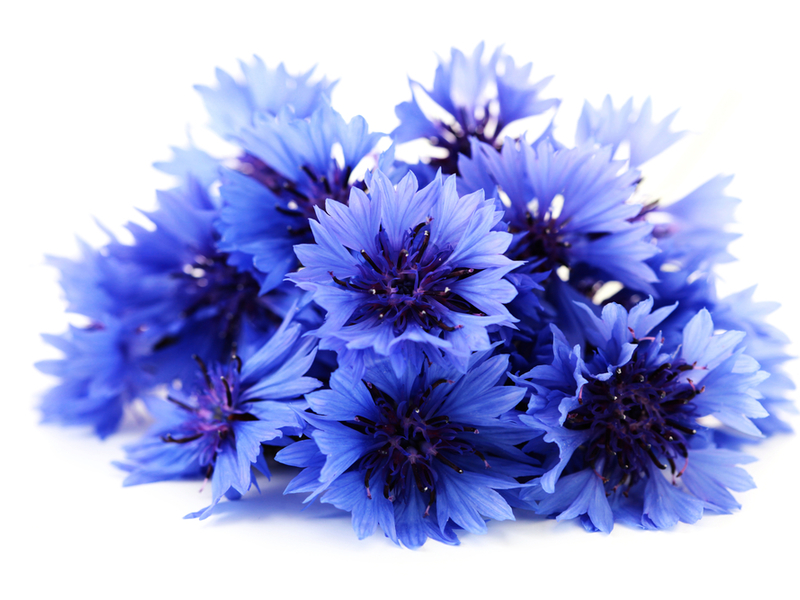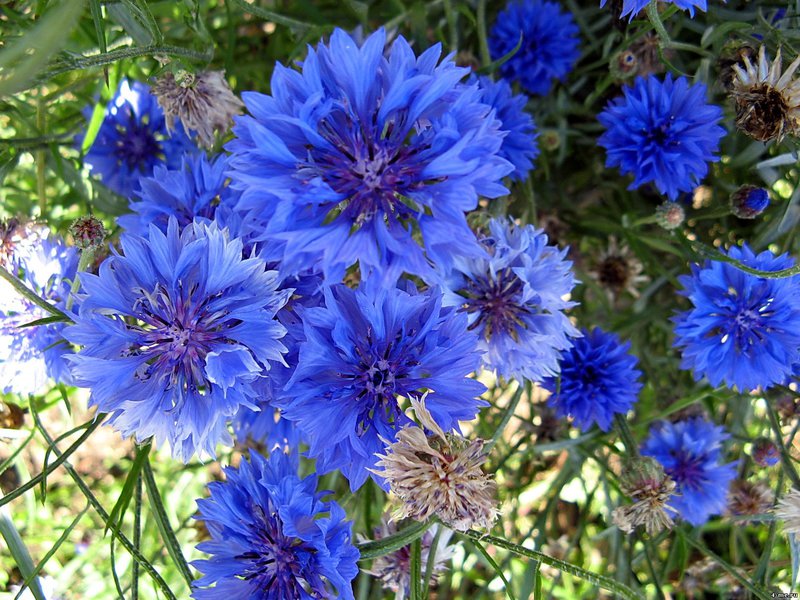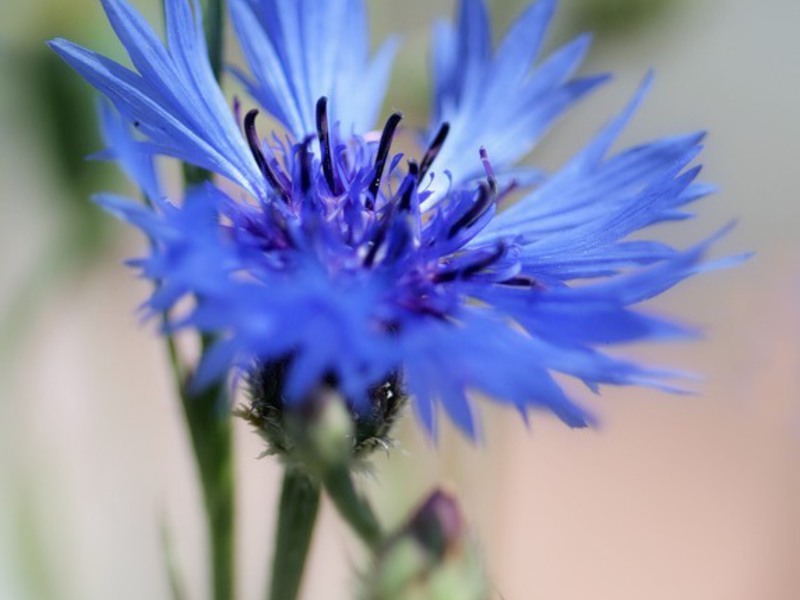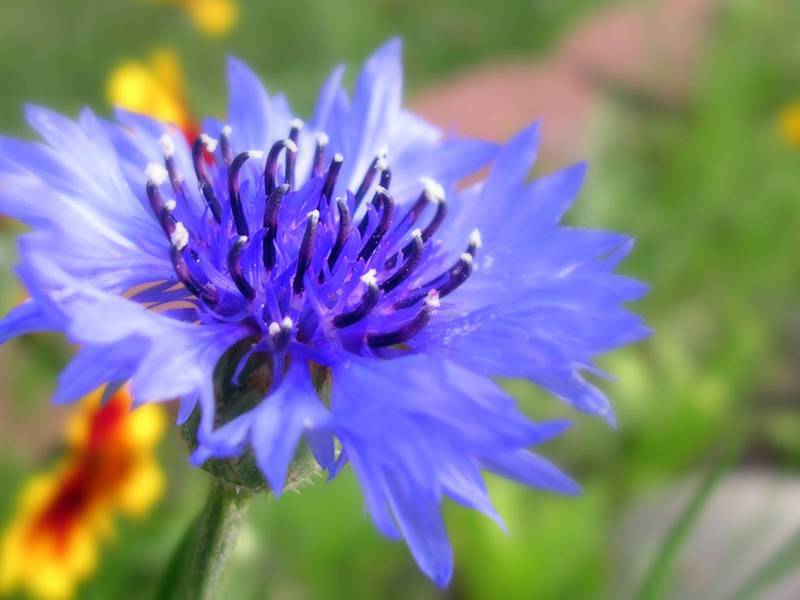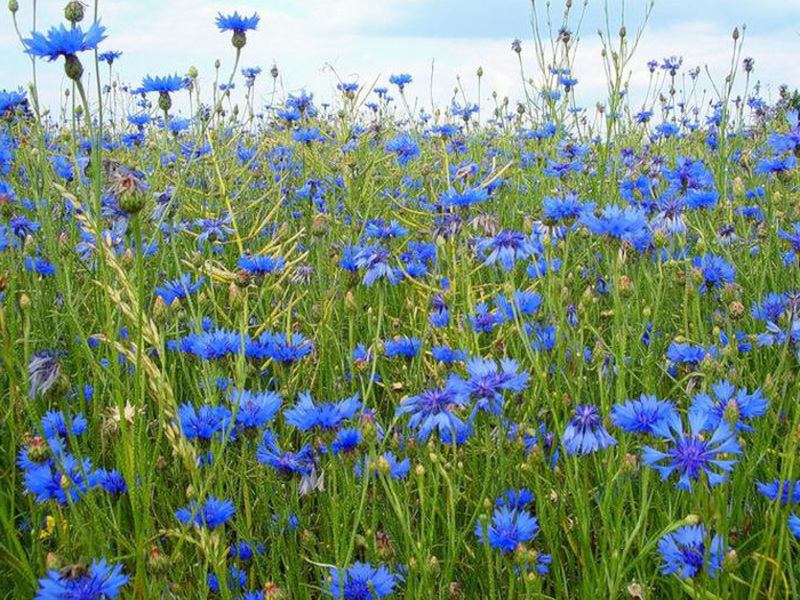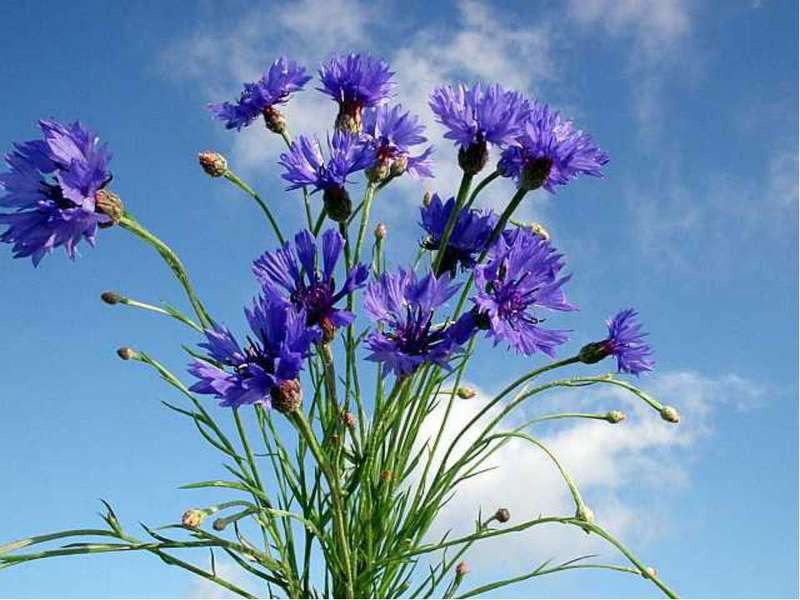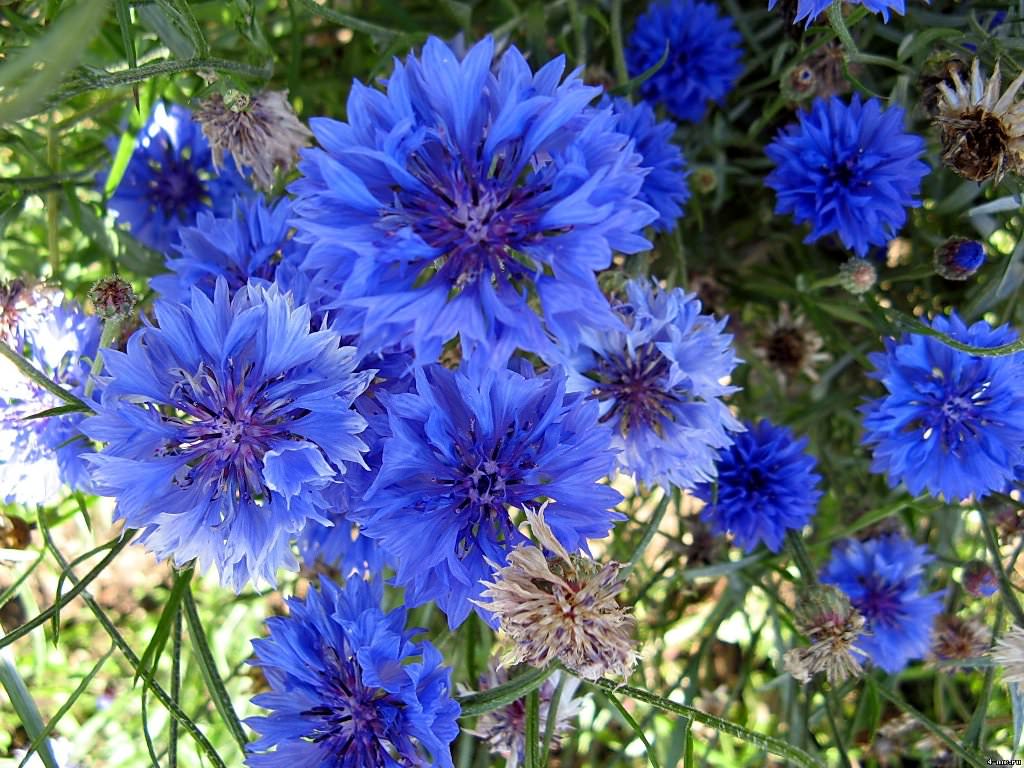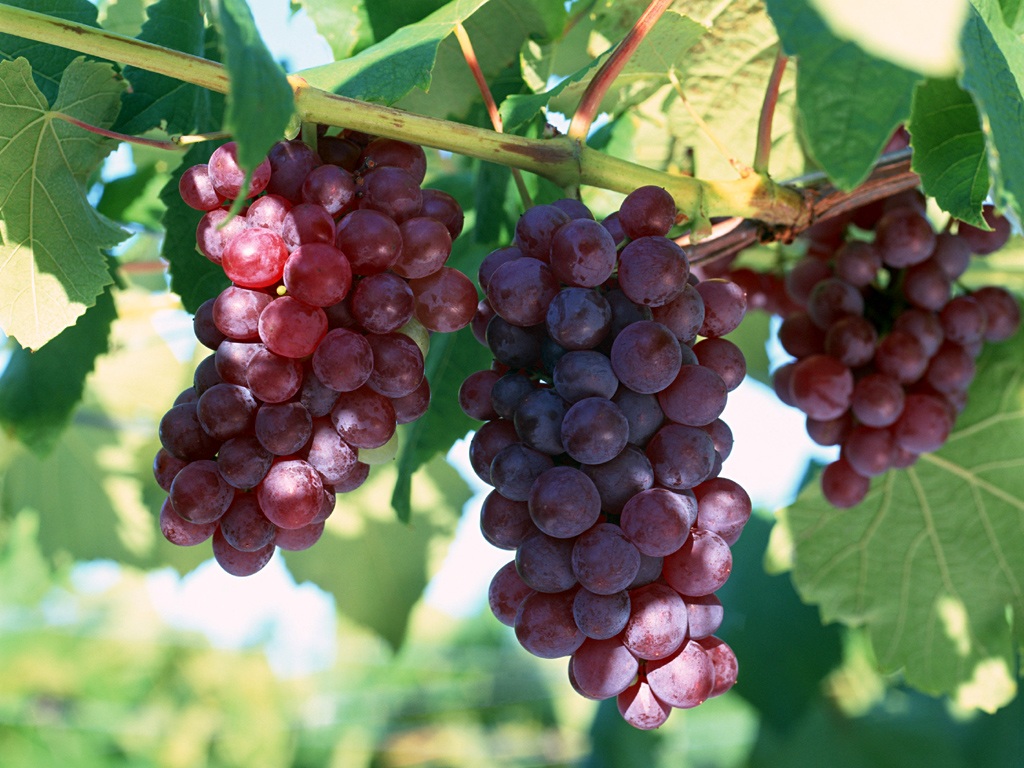Cornflower is an ornamental plant from the Asteraceae family. In nature, it is blue, pink, purple, red, white, burgundy and yellow. Grows among the spikelets of wheat in the field. Cornflowers, as you can see in the photo, look like light snowflakes. They are gaining in popularity. Flowers are planted in flower beds and personal plots. The picture confirms this.
The people are blue cornflower called a hair... This is an annual plant, it can reach a height of 80 cm. On its stem there is always one double or semi-double bud up to 5 cm in diameter. Blooms from mid-June to late autumn.
This flower is widespread in Asia, America and especially in Europe. You can also meet him in North Africa. Scientists count up to 500 species of this plant, differing in the shape of the edges of the flower and in the baskets of inflorescences. They are cylindrical and spherical, as seen in the picture.
Cornflower varieties
The following varieties are most in demand:
- Mountain cornflower. Perennial, reaching a height of 40 cm, with blue flowers blooming in June-July.
- Whitewashed cornflower. It got its name due to the unusual color of the leaves (whitish-pubescent below). It can grow up to 80 cm in height. Flowers are bright pink, with a white center.
- The large-headed cornflower (pictured) has bright yellow flowers and large buds up to 80 cm high, as seen in the photo.
- A beautiful cornflower. It has pinnately dissected leaves and mauve flowers, spherical in shape and reaches a height of only 20 cm.
- A rough cornflower (photo) has a color with purple, can reach a height of 1 meter.
You can admire the plant in the photo of flowers. Cornflowers look charming.
Plant in folk medicine
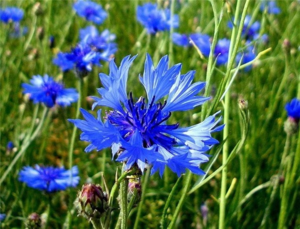 The plant is medicinal... Its flowers contain flavonoids, dyes, ascorbic acid and carotene. Decoctions and infusions of the plant are most effective.
The plant is medicinal... Its flowers contain flavonoids, dyes, ascorbic acid and carotene. Decoctions and infusions of the plant are most effective.
The flower is considered to be a good diuretic, anti-inflammatory, choleretic and analgesic effect.
Its broth is taken for diseases of the heart system, headaches and stomach pains.
Baths with a decoction of this plant are used for gynecological diseases, eczema, rheumatism, diathesis, diarrhea, jaundice and dropsy.
But these flowers, like all other plants, have some contraindications. It is required to use it after consulting a doctor and only in complex therapy.
Application in cosmetology
The medicinal properties of the plant can be apply to care for oily skin, with split ends and falling hair, for the treatment of seborrhea. For this, an infusion of plant flowers is used. They can rinse the head after washing or rub it into the scalp.
Tincture of flowers on vodka is recommended to wipe oily skin with a cotton pad. But it is advisable to dilute the tincture with water (1: 1).
Growing cornflower
It is necessary to grow flowers in the garden in open, sunny places. If planting is done with other plants, then cornflowers are planted in the first row so that they receive enough light.
They decorate the area with small groups of walks. Their tall species look great near bushes. Flowers not only decorate, but also protect the soil from erosion.
Cornflower is often planted to decorate flower beds. This is perfectly demonstrated by the photo.
In flower beds, it looks effectively with perennials with poppy and calendula.They bloom at the same time, forming an original meadow. For alpine slides, it is necessary to use undersized plant species.
Plant neighbors for cornflower
Cornflowers are good are combined with the following plants:
- blue aquilegia;
- dicenter;
- silver-blue alpine bluehead;
- Fassen's catnip.
Annuals are grown in balcony boxes and in pots on the outside window sills.
Seeds are sown in April-May. The soil should be rich in humus with neutral acidity. Sand is added to the clay soil. Lime should be added to acidic soil (in a layer of 1 cm) once every 3 years and only in the fall.
For abundant flowering, top dressing can be done before flowering.
Planting annual cornflowers
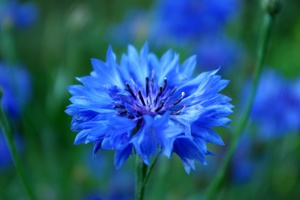 Annuals are sown as seeds in open ground in spring or autumn. No transplant is required because it is poorly tolerated.
Annuals are sown as seeds in open ground in spring or autumn. No transplant is required because it is poorly tolerated.
If seedlings are needed, then they should be grown in peat tablets. It should also be planted in open soil at the end of May.
Seedlings need to be thinned, leaving a distance between flowers up to 30 cm.
Reproduction by dividing the root
This type of reproduction is used for transplanting perennials. In August, the flowers must be dug up, the stem cut off, leaving only 10 cm in length. Free the roots from the ground, wash and cut into 2 parts. Each part should have 2-3 buds.
Delenki are planted in holes fertilized with compost. Water the seedlings 3 times a week. But the earth should dry out slightly for watering. The flowers will bloom profusely next summer.
If you need seeds, then you have to wait until the petals on the inflorescence fade, and its center darkens. Plucked inflorescences are necessary store 3 weeks in a dry place... Then shake the seeds out of the head and store in a paper bag at room temperature.
Fighting disease
Of the diseases, the cornflower can only be threatened by fusarium wilting. This disease is fungal. Therefore, processing is required not only of the plant itself, but also of the soil. The soil is sprinkled with ashes, fertilized with a weak infusion of manure or foundation.
